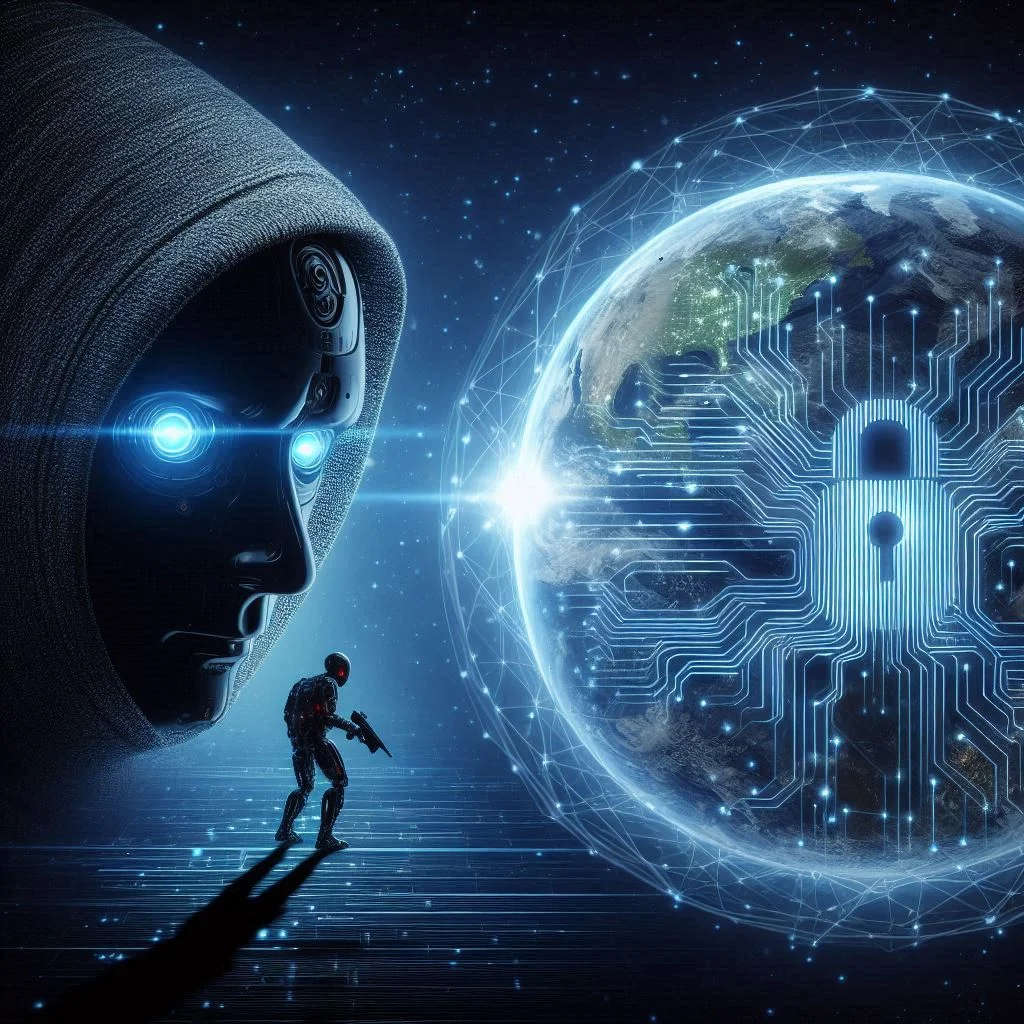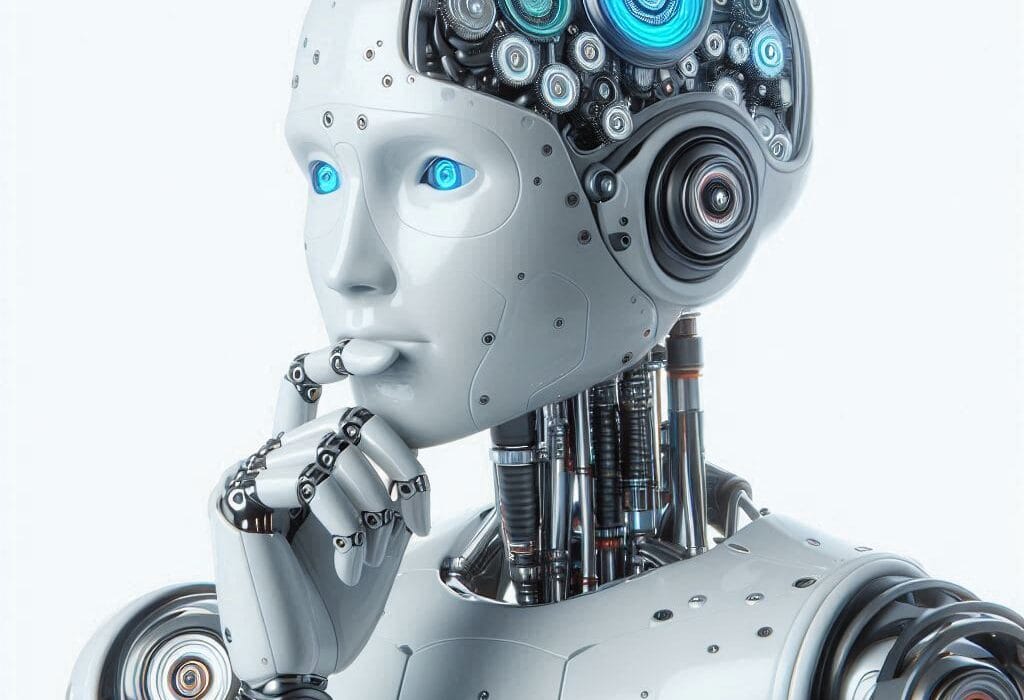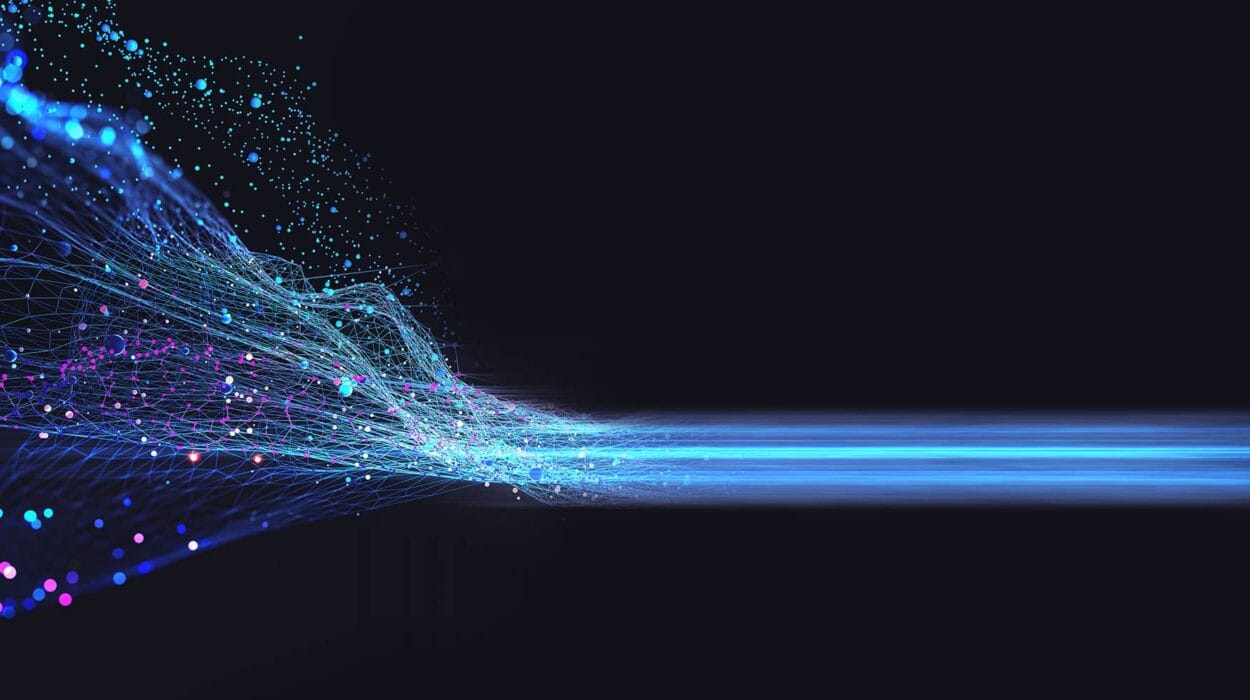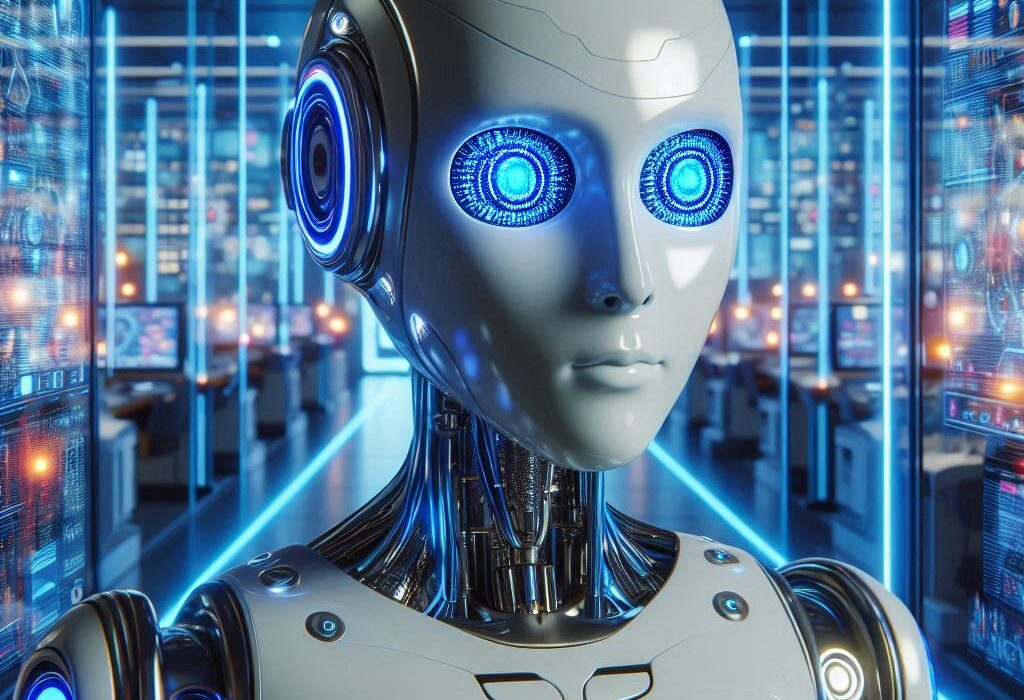The rise of artificial intelligence (AI) is one of the most transformative advancements of the 21st century. From self-driving cars to voice assistants and healthcare diagnostics, AI promises to revolutionize nearly every aspect of our lives. But as with any powerful technology, AI comes with its dark side—a side that many are only beginning to realize as its capabilities continue to evolve. The growing concern surrounding AI isn’t just about its impact on jobs or its ethical implications; it’s about the cybersecurity threats and privacy risks that come with its integration into everyday life. In this exploration, we will dive deep into these concerns, examining how AI is both a tool for defending and attacking our digital infrastructure, and what we can do to protect ourselves in a world increasingly dominated by machine intelligence.
The Emergence of AI in Cybersecurity
Before we can understand the darker side of AI, it’s crucial to first recognize its role in the world of cybersecurity. Traditionally, cybersecurity was a human-driven effort, relying on analysts, firewalls, and intrusion detection systems to protect sensitive information from malicious actors. But as cyber threats have evolved in complexity and scale, so too has the need for more advanced solutions. Enter AI.
AI has proven itself to be a valuable asset in cybersecurity, with machine learning algorithms capable of analyzing vast amounts of data and identifying threats that human operators might miss. From malware detection to phishing attacks and even identifying suspicious behavior within networks, AI systems can process information much faster and more accurately than any human team. This makes it a game-changer for organizations looking to bolster their defenses in an era of increasingly sophisticated cyberattacks.
But this same power can be weaponized by malicious actors. AI can be used to automate and scale cyberattacks, making them faster, more targeted, and harder to detect. Attackers can leverage AI to create adaptive malware that learns and evolves in response to security measures, effectively making traditional defense mechanisms obsolete. AI can also be used to conduct spear-phishing attacks that are incredibly convincing, as it can analyze public data to craft personalized messages that are more likely to deceive targets.
Autonomous Cyberattacks: The Next Generation of Threats
As AI becomes more advanced, the concept of autonomous cyberattacks becomes a reality. Unlike traditional cyberattacks, which often rely on human intervention, autonomous attacks can be initiated and executed without any direct human involvement. This introduces a new level of unpredictability and scale that could overwhelm existing cybersecurity infrastructure.
Autonomous malware, for instance, can adapt to its environment, learning to bypass security protocols and change its behavior based on real-time feedback. This means that even if a particular malware variant is detected and neutralized, a new one could quickly emerge, as the AI behind it continually refines its strategies. The idea of an AI-driven attack that can learn and adapt makes traditional defense mechanisms like antivirus software or firewalls less effective. The result is a potentially endless game of cat and mouse, with defenders perpetually playing catch-up.
AI can also be used in denial-of-service (DDoS) attacks. These attacks flood a network with so much traffic that it becomes overwhelmed and crashes. With AI, attackers can use distributed botnets to launch massive, complex DDoS attacks that are far more difficult to mitigate. The AI can also optimize the attack in real time, ensuring that it’s as effective as possible, potentially causing widespread disruption.
Moreover, AI-powered cyberattacks are capable of targeting vulnerabilities at a level of precision that was previously impossible. Through machine learning, attackers can automate the identification of weaknesses in software, networks, and even human behavior. This kind of precision makes AI-driven cyberattacks particularly dangerous, as they can strike with surgical accuracy, often going unnoticed until it’s too late.
Privacy Concerns in an AI-Driven World
While AI’s role in cybersecurity is often framed as a defensive one, its integration into everyday technology also brings significant privacy concerns. AI systems rely on vast amounts of data to function—data that is often personal, sensitive, and sometimes unknowingly collected. As AI systems become more sophisticated, they are able to analyze this data at scale, creating detailed profiles of individuals and groups, often without their explicit consent.
One of the biggest concerns is the use of AI in surveillance. Facial recognition technology, powered by AI, is becoming ubiquitous, with governments, corporations, and even individuals using it to track and monitor people. This raises significant questions about the right to privacy and whether individuals are being unknowingly watched at all times. While this technology can be used for security purposes, such as identifying criminals or preventing terrorism, it also opens the door to mass surveillance by authoritarian regimes or corporate entities with questionable motives.
AI systems are also used to collect vast amounts of personal data from social media platforms, online interactions, and other digital footprints. This data is then used to predict behavior, target advertisements, and influence decisions. The problem arises when this data is not adequately protected or when it’s used for purposes that individuals are not aware of or have not consented to. The Cambridge Analytica scandal, which revealed how Facebook data was used to influence elections, serves as a stark reminder of how personal information can be exploited in ways that undermine privacy and democracy.
Another significant concern is the potential for AI to compromise data security. As AI systems are integrated into more aspects of our digital infrastructure, from banking to healthcare, they become prime targets for cybercriminals. The theft or manipulation of sensitive data, such as medical records or financial information, could have devastating consequences for individuals and organizations alike. The sophistication of AI-driven attacks means that even a small vulnerability in a system could be exploited on a massive scale, putting countless people at risk.
Bias and Discrimination: The Hidden Dangers of AI
While AI promises to be an impartial tool, it is not without its flaws. One of the most significant concerns in the realm of AI and cybersecurity is the potential for bias. AI systems are only as good as the data they are trained on, and if that data is flawed or biased, the AI can perpetuate those biases.
For example, facial recognition systems have been shown to be less accurate at identifying people with darker skin tones, particularly women. This has led to concerns that AI-powered surveillance could disproportionately target minority communities, leading to unjust surveillance and profiling. Similarly, AI systems used in hiring or lending decisions could reinforce existing societal biases, leading to discrimination against certain groups.
In the context of cybersecurity, bias in AI can have serious implications. If an AI system is trained on biased data, it may fail to detect certain types of threats or might wrongly flag legitimate activities as malicious. This could lead to security vulnerabilities or, conversely, false alarms that waste valuable resources. Moreover, AI systems that are designed to optimize security could inadvertently create new forms of discrimination or inequity by targeting certain individuals or groups based on biased data.
The Ethical Dilemma: Who is Responsible?
As AI becomes more integrated into the cybersecurity landscape, the question of accountability becomes increasingly complex. If an AI system makes a mistake—whether it’s failing to detect a cyberattack or unjustly violating someone’s privacy—who is responsible? Is it the developers who created the system? The organizations that deploy it? Or is it the AI itself?
This ethical dilemma is particularly pressing in the context of autonomous cyberattacks. If an AI system were to launch a cyberattack, causing harm to individuals or organizations, who should be held accountable? Could AI itself be held liable, or would the blame fall on the creators or users of the technology? These are questions that lawmakers and ethicists are grappling with as AI continues to advance.
Moreover, as AI becomes more autonomous, the lines between human and machine responsibility become increasingly blurred. If an AI system is used to conduct surveillance on individuals without their consent, is it the responsibility of the AI or the entity that deployed it? And if an AI system is used to launch an attack on a nation’s infrastructure, who should bear the consequences?
Moving Forward: Mitigating the Risks of AI
While the dark side of AI is undeniable, there are steps we can take to mitigate the risks and ensure that the technology is used responsibly. The first step is transparency. AI systems, especially those used in cybersecurity and surveillance, should be transparent in their operations. Individuals should know what data is being collected, how it’s being used, and who has access to it. This can help build trust in AI systems and ensure that they are used ethically and responsibly.
Additionally, it is crucial to invest in AI governance. Governments and international organizations must create regulations and frameworks that ensure AI is used safely and responsibly. These frameworks should address issues such as bias, accountability, and privacy protection, and they should be adaptable as AI technology evolves.
Another important step is improving AI security. As AI becomes more integral to cybersecurity, it is essential to develop robust defenses against AI-powered attacks. This includes creating systems that can detect and respond to AI-driven threats, as well as implementing fail-safes that can prevent AI systems from acting maliciously or going rogue.
Finally, public awareness and education are key. People must understand the implications of AI in their daily lives and how it can affect their privacy and security. This includes being aware of the risks associated with AI-driven surveillance, data collection, and cyberattacks, and taking steps to protect personal information online.
Conclusion
AI has the potential to revolutionize cybersecurity, making systems more efficient, adaptive, and effective in the face of evolving threats. However, as with any powerful technology, it also brings significant risks—risks that we must acknowledge and address if we are to navigate the future safely. From autonomous cyberattacks to privacy concerns and bias, the dark side of AI is something that cannot be ignored. By taking proactive measures, investing in transparency and governance, and ensuring that AI is developed and deployed responsibly, we can harness the benefits of AI while mitigating its risks. As we continue to push the boundaries of artificial intelligence, it is imperative that we do so with caution, responsibility, and a commitment to protecting our privacy, security, and humanity.






